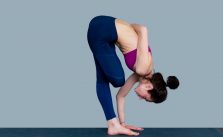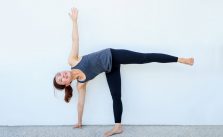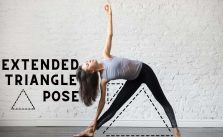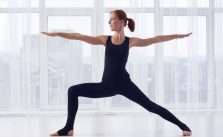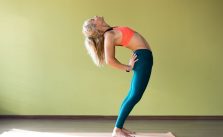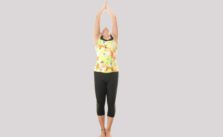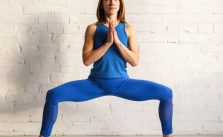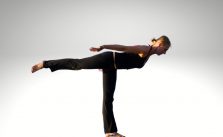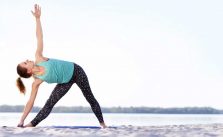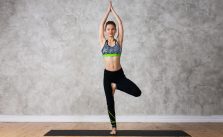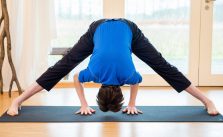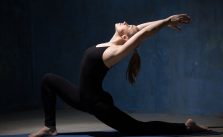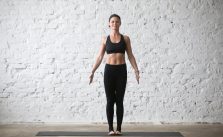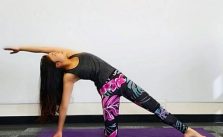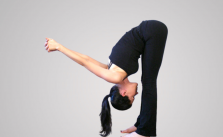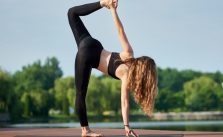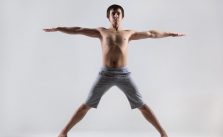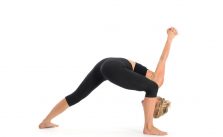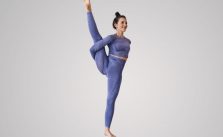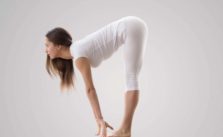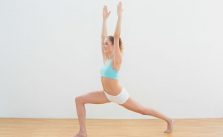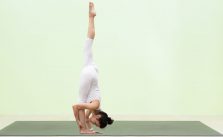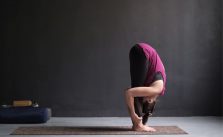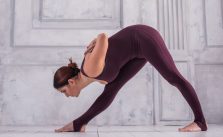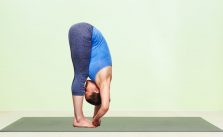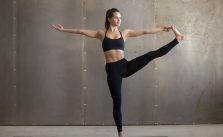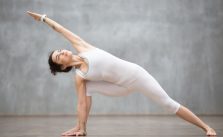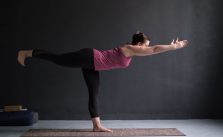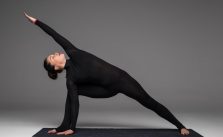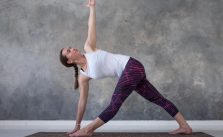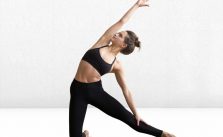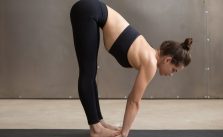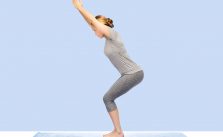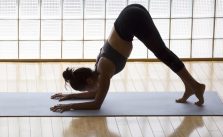
Standing yoga poses are asanas in which one or both feet are planted on the ground and the body is held more or less vertically. Standing asanas may also require you to twist, bend forward, backwards, or sideways.
Standing poses provide the practitioner with a sense of ‘grounding,’ and they’re great for strengthening and stretching all of the leg muscles. Such poses aren’t just a great way to stretch and strengthen, but they’re also beneficial to enhance balance and stability.
In yoga practice, you typically maintain standing poses for a shorter period of time and they are generally quite invigorating.
Many standing postures appear simple at first appearance, but as you work different muscles throughout your body, they become more demanding and beneficial. Practising standing poses engages all the muscles of the body which acts as a foundation for many challenging and difficult yoga poses.
List of standing yoga poses
Explore our index of standing yoga poses below for step-by-step instructions, pose benefits, modifications, and Sanskrit pronunciation for these yoga standing poses. With consistent practice, you’ll find that these poses can help you achieve a greater sense of grounding, balance, and overall well-being.
Benefits of standing yoga poses
Standing yoga poses are a source of strength, vitality, and stability to the spine. They aid in building upper body strength when you engage your arms. Some other benefits of practising standing poses are as follows:
- The legs, glutes, and core muscles are largely strengthened and stabilized in standing asanas.
- Major leg muscles such as hamstrings, quads, and calves are given special attention which reduces their stiffness.
- Standing yoga poses can aid in the development of balance, muscle involvement, and alignment in your body.
- Most standing poses also assist in increasing circulation to the neglected parts of the areas such as joints, tissues, and organs.
- Practising standing poses enables you to stimulate, strengthen and tone your core muscles by engaging them to keep your back straight.
- Engaging abdominal muscles improve the functioning of the digestive organs.
- Your ankles are also engaged and strengthened while standing, which is not possible in other yoga styles.
- Standing poses open the chest, enhancing lung capacity.
- Keeping your hips aligned while standing paves the way for a better posture.
- The alignment of the neck helps in the alignment of the spine and keeping the back straight.
- When you spread your legs for certain standing poses, you also focus on opening and stretching the groin muscles.
Tips for practising standing yoga poses
Keep the following tips in mind to practice the standing yoga poses effectively
- Your feet should be firmly placed on the ground with your toes spread to distribute weight evenly.
- Keep the knees in line with the second and third toes.
- A small micro-bend in the knee is acceptable to gradually strengthen the knee.
- To keep your body upright, your hips should face forward in a neutral position and be in line with each other.
- Engage your abdominal muscles to keep your lower back and spine straight.
- Ensure your neck is tall and not tilted forward or backwards in standing asanas to avoid pressure on the cervical spine.
- If you’re a beginner, take the support of the wall to build your stability and balance.
- Using folded blankets under your heels can take off some strain.

